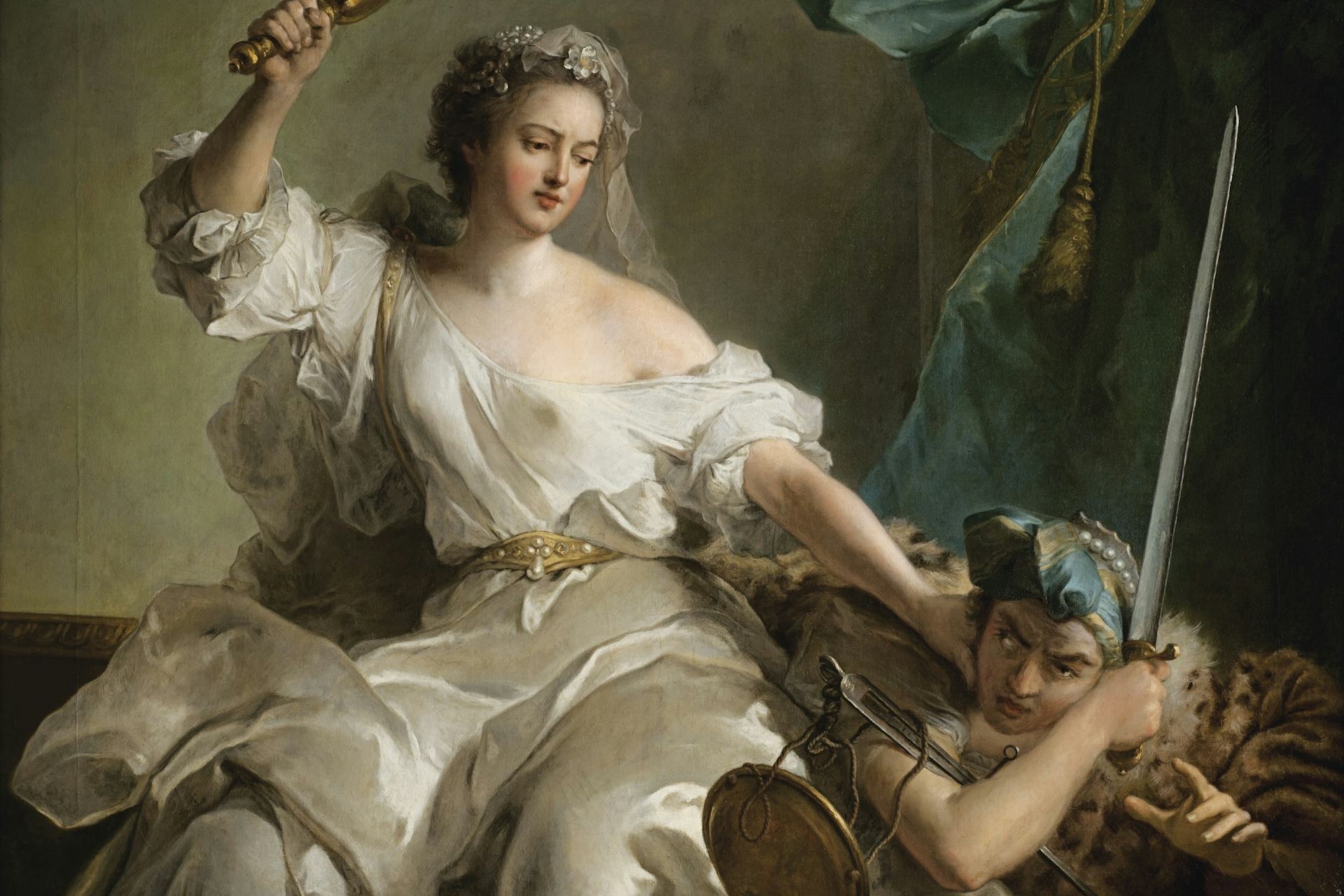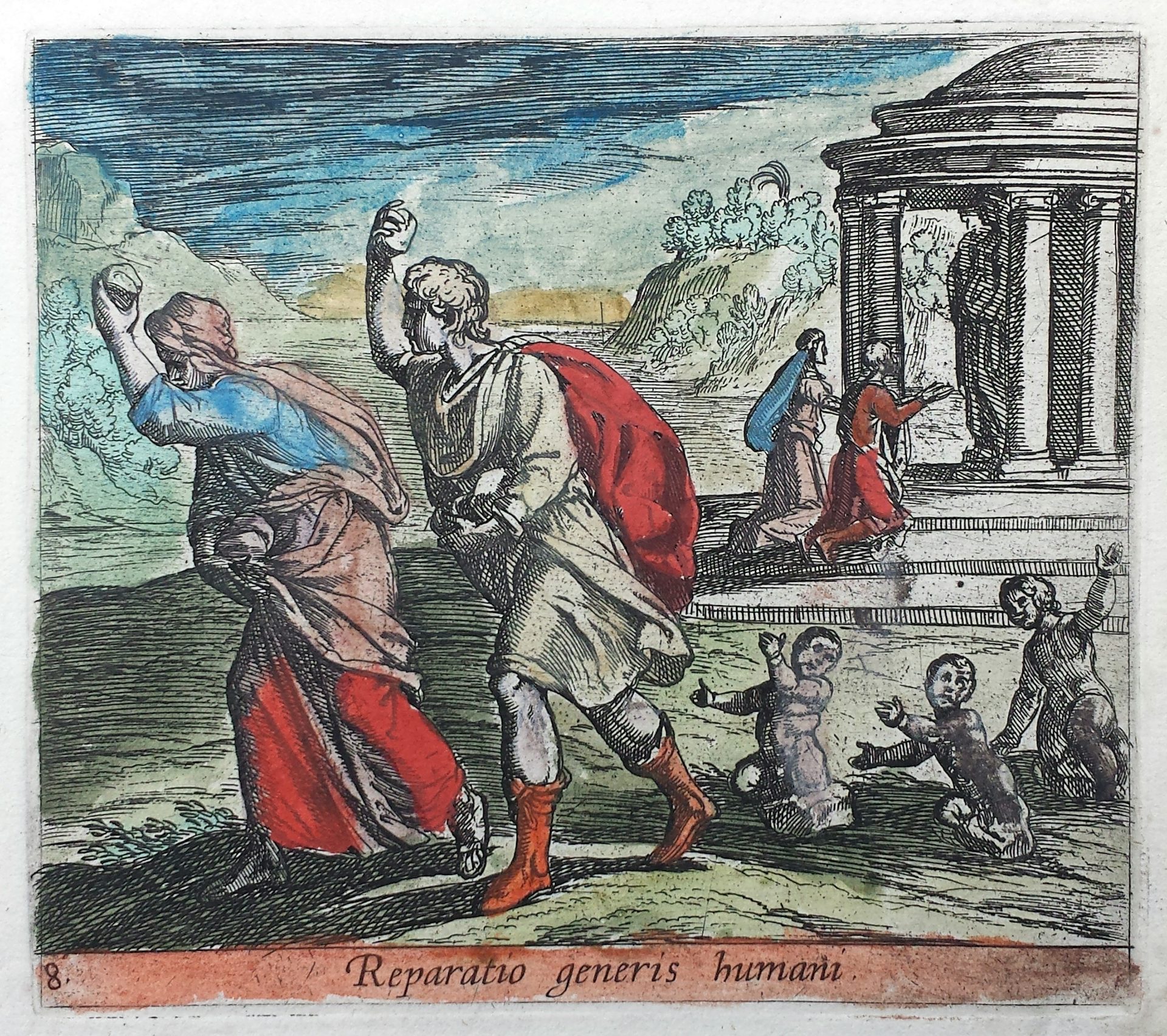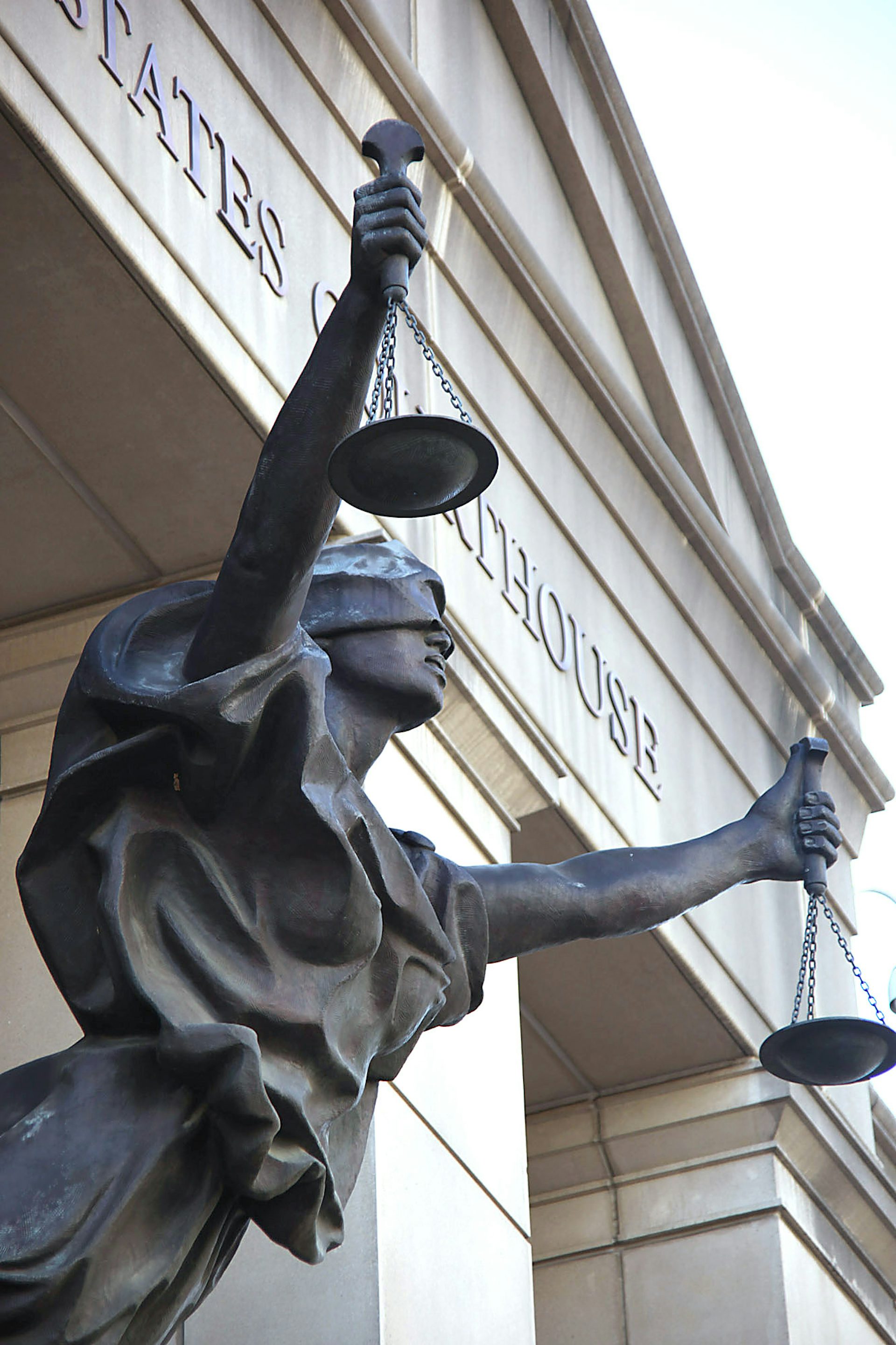Themis

Many greeks worshipped Themis as a defender of the poor and meek, a precursor to the modern-day Lady Justice. Allegory of Justice Punishing Injustice by Jean-Marc Nattier (1737)
Wikimedia CommonsPublic DomainOverview
Themis, the daughter of Gaia and Uranus, was one of the original twelve Titans of Greek mythology. Though in some traditions she conspired with her fellow Titans to overthrow their father, Uranus, she betrayed them during the Titanomachy by siding with the Olympians. Themis eventually married the king of the Olympians, Zeus, and bore him many children, including the Horae (“Hours”) and the Moirae (“Fates”). Known as a goddess of justice, Themis was often depicted wearing a classical chiton and holding a balanced scale.
Easily one of the most revered Titans, Themis was worshipped at shrines and temples across the Greek world. She was adopted by the Romans as Iustitia, or Justice, and has survived in popular iconography as "Lady Justice," a robed, scale-toting defender of righteousness.
Etymology
The name “Themis” (Greek Θέμις, translit. Thémis) may have been related to the ancient Greek verb τίθημι (títhēmi), meaning “to place, to establish.” Themis would thus translate to “that which is laid down or established,” a reference to customs established through a society’s culture. In Mycenaean Greek (ca. 1600–1100 BCE), Themis may have been the word for “debt.”[1]
In Indo-European linguistics, the name Themis has been connected with dāmi, a word from the ancient Iranian language of Avestan meaning “creation” or “creator.” This has led some scholars to suggest that Themis’ name is pre-Greek in origin.[2]
Pronunciation
English
Greek
Themis Θέμις (translit. Thémis) Phonetic
IPA
[THEH-mis] /ˈθiːmɪs/
Alternate Names
According to some sources, Themis had an alternate name, Ichnaea (Greek Ἰχναῖα, translit. Ichnaîa), meaning “tracker.” Some speculated that this name reflected her role as an all-observing goddess of justice.[3] However, the name could have simply come from the Thessalian town of Ichnae, where Themis was worshipped as “Ichnaean Themis.”[4]
Epithets
Themis had a handful of epithets related to her function as a goddess of justice, including ἱερά (hierá, “holy”), σώτειρα (sṓteira, “savior”), and εὔβουλος (eúboulos, “well-counseling”) οr ὀρθόβουλος (orthóboulos, “straight-counseling”).
Attributes
As the embodiment of justice, order, and custom, Themis was known as a creator of balance and a righter of wrongs. Those who worshipped her prayed for the cosmic forces of justice to bring fairness to their lives and endeavors. She was sometimes also regarded as an oracle.
Themis was generally depicted wearing a long robe and veil. Her attributes included scales and the cornucopia.
Family
Themis was the daughter of Gaia, mother of the earth, and Uranus, father of the heavens.[5] This union of earth and sky resulted in the creation of not just Themis but also the rest of the Titans: Oceanus, Coeus, Crius, Hyperion, Iapetus, Cronus, Thea, Rhea, Mnemosyne, Phoebe, and Tethys. Themis had other siblings, too—the terrifying Cyclopes and Hecatoncheires, who, as embodiments of primordial chaos, challenged everything she stood for.
Family Tree
Mythology
Themis and the Olympians
Unlike many of the other Titans, Themis was very close with the Olympian gods, especially Zeus. In fact, Themis became Zeus’ second wife (before he married his sister Hera) and bore him several immortal children. In some traditions, Themis was also one of Zeus’ nurses when he was a newborn.[12]
On Olympus, Themis was the embodiment of divine order and lived peacefully with the gods. She was even on friendly terms with the temperamental Hera.[13] Ancient authors described how Themis sat beside the throne of Zeus himself:
There the savior Themis, seated beside Zeus the god of hospitality, is honored more than among all other men. For when there is a heavy weight in the balance that sways many ways, to judge with a straight mind and not inopportunely is a difficult struggle.[14]
It was Themis, the Greeks believed, who reported sinners to Zeus for punishment:
wicked men never elude pure Themis: night and day her eyes are on them, and the wide world through above the tribes of men she floats in air, holpen of Zeus, for punishment of sin.[15]
Themis was also said to preside over the assemblies of both gods and men.[16]
Themis the Oracle
In addition to embodying cosmic justice and order, Themis was also regarded as an important oracle. For example, she was often said to have been the second keeper of the oracle at Delphi, after Gaia but before Apollo.[17] In some traditions, Themis was even the co-founder of Delphi, together with Apollo.[18] It is probably not by chance, then, that in the third Homeric Hymn (dedicated to Apollo), Themis is presented as Apollo’s wet nurse.[19]
In many myths, Themis delivered prophecies to the gods themselves. It was Themis, for example, who warned the Titans that they would be defeated by Zeus and the Olympians.[20] Likewise, in many traditions it was Themis who warned Zeus and Poseidon not to sleep with the sea goddess Thetis, as Thetis’ son was destined to be greater than his father (a frightening prospect for a god).[21]
In another story, Themis revealed to Zeus that Gaia, the earth, was reeling under the weight of overpopulation. In order to kill off some mortals and thus lighten the load, Zeus set in motion the chain of events that led to the Trojan War.[22]
Themis’ oracular powers also played an important role in the myth of Deucalion, at least as told by the Roman poet Ovid. Deucalion, like the Hebrew Noah or the Mesopotamian Utnapisthim, survived a flood that killed off all other humans. After the waters had subsided, Deucalion and his wife asked Themis how they could repopulate the earth. Themis instructed the couple to throw rocks over their shoulders as they walked. The rocks thrown by Deucalion turned into men, while those thrown by his wife turned into women. In this way, Themis was responsible for the creation of a second human race.[23]

The Rebirth of Mankind, print by Antonio Tempesta (1606).
British MuseumCC BY-NC-SA 4.0Worship
Themis had a rich and vibrant cult running throughout Greek society. Indeed, she was often seen as the people’s goddess—one who helped the poor and defended the meek. Such praise was rare for a Titan; the ancient beings were largely viewed as distant and irrelevant to Greek life.
Themis had temples and sanctuaries across the Greek world. At Olympia, Themis had an altar near the important sanctuary of Gē or Gaia (both names for the primordial goddess of the earth).[24] She also had cult sites across the regions of Thessaly,[25] Boeotia,[26] and Attica.[27] Perhaps her most famous temple—which can still be seen today—was located at Rhamnus, a city on the coast of Attica, where she was worshipped together with Nemesis, the embodiment of vengeance.
Pop Culture
Themis has continued to thrive in popular culture via the symbol of Lady Justice. Robed in a classical chiton and bearing the scales of justice, Lady Justice weighs the deeds of humans and dispenses judgment based on facts and evidence. However, the blindfold, which is often present in modern depictions, was not a characteristic of the ancient Themis. As the embodiment of fairness, Lady Justice is a powerful symbol of Western legal systems—including the American judiciary—and is often depicted in statues and court house decor.

A statue of a blindfolded Lady Justice at the Albert V. Bryan United States Courthouse in Alexandria, Virginia.
Tim EvansonCC BY-SA 2.0